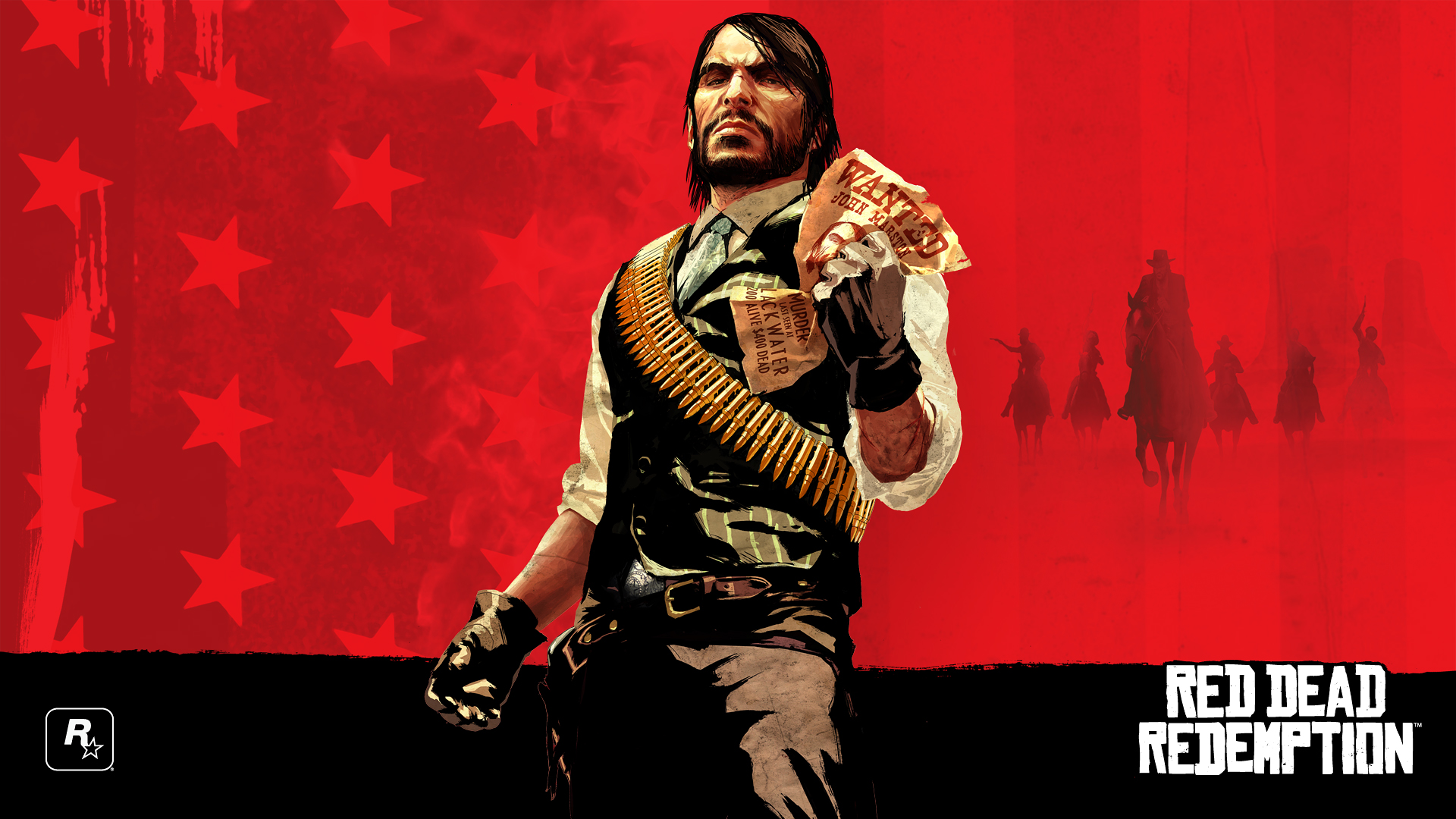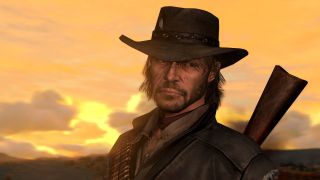Red Dead Redemption was Rockstar's masterpiece... and still is

Red Dead Redemption was exactly what I wanted after GTA 4’s tighter, more concentrated setting and downbeat storyline. The sequel to the Xbox’s near-forgotten Red Dead Revolver restored the scale of San Andreas, and showed us what happens when Rockstar applies its extraordinary world-building ability to a period setting. I am not convinced Rockstar’s Wild West sandbox game has been surpassed in the intervening five years since Red Dead’s release. GTA 5 has a bigger, much more impressive world, but Red Dead has everything else.
I think playing as a great character who isn’t a complete dick has a lot to do with that. Red Dead frames John Marston as a reformed outlaw in the last days of the Wild West, under the duress of the government to capture or kill Bill Williamson, one of his dangerous old criminal cohorts. Marston’s motivation is a simple dream of a civilised life and running a farm with his family. This connection with him adds a valuable framework to the whole game, which is otherwise functionally GTA in the Wild West, but with more elements to consider.

Marston can hunt animals, for example, and Red Dead radically overhauled GTA 4’s clunky third-person cover shooting. With the Dead Eye command, you can slow down time and line up shots, which Marston will then reel off in quick succession. Playing it now, I love how loud and raw Marston’s old guns feel, particularly his revolvers, and Dead Eye means I don’t have to spend the whole game in cover, like almost every other post-Gears shooter on 360. Today I find the shooting’s default auto-targeting a bit too easy, though, so I switch to expert targeting for a looser, more high-stakes challenge in shootouts. This makes Red Dead much more exciting the second time around - I earn every kill.
The sprawling backdrop to all this rhythmic slaughter is the part of Red Dead I recall the most fondly, and I still adore the Wild West as it’s portrayed here. Inevitably, I remember the world looking crisper than this, rather than its jagged edges and sometimes rough textures, particularly on NPCs. The art direction, which is a touch less cartoon-y than GTA 4 and 5 to my eye, stands up. For what are essentially dry, near-empty landscapes, each part of Red Dead’s world has its own colour palettes, architecture befitting its populace and memorable cliff formations. When the sky clears at night, it fills with stars - these are not experiences that are dulled by the 360’s limitations. This landscape is extraordinary to ride across by horse at any time of day. An Xbox One upgrade similar to GTA 5’s, with enhanced lighting, resolution and maybe even new wildlife, would be most welcome.

The three acts take Marston from the more typical Wild West surroundings of New Austin, to the dry landscape of Nuevo Paraíso in Mexico, before closing with West Elizabeth, a more civilised and modern locale that underlines how Marston’s era of Wild West outlaws is in its final days. Everyone on the internet talked post-release about how Mexico is the boring part of the game after a razor sharp first act that leads to a brilliant raid on Williamson’s hideout.
On one level, I agree. Mexico distracts from the main narrative thrust of Marston’s revenge tale, and he nonsensically ends up working for both the Mexican government and their opposition rebels, killing loads on both sides. That’s why I think some people don’t like Mexico. There are so many cool missions here, though: one that lets Marston use a gatling gun on the back of a train, another where you’re running handcuffed through a war zone before getting your weapons back, a duel with a German fellow over a gambling disagreement. In particular, the retired gunslinger Landon Ricketts offers a curious parallel to Marston as a character, and all of his missions are a worthy aside to the overarching revenge tale. This time around, I reckon Rockstar could’ve cut two hours of missions from the Civil War arc and had a much tighter second act.

There are a couple of annoying bits that feel like they wouldn’t be in the game if Rockstar was making it today. There’s an awful lot of riding next to extremely slow NPCs on horses. That’s got on my tits a bit this second time around. The checkpointing isn’t as generous as GTA 5, either - and sometimes the conditions of failure are arbitrary: riding a horse into an ally counts as attacking them.
Sign up to the 12DOVE Newsletter
Weekly digests, tales from the communities you love, and more
Those frustrations aside, there’s such a strong variety of missions in Red Dead’s campaign, aided by the frequent shifts in location and changes in scale from huge conflicts to more intimate shootouts. The stranger side quests, carried across from GTA 4, play out like vignettes or episodes of a TV drama - with Marston witness to the tales of many colourful characters. They vary wildly in quality. Some are just gussied-up fetch quests, and oddly the wraparound cutscenes usually end up being more fun than the actual missions. The best string of stranger quests is the one belonging to the ‘Strange Man’ - a gentleman in a top hat who knows more about John Marston’s past than he himself can recall. Marston’s final encounter with this man takes place at the exact spot that will, at the climax of the game, become his grave. How stirring, for a videogame to show you a human embodiment of death, while being subtle enough to leave the Strange Man’s true nature open to interpretation.

What’s galling about moments like this is it spotlights how unambitious videogame narratives have been in the time since its release. The writing and acting is generally great in Red Dead - Marston is a well-realised figure with a proper arc, and for the most part, the supporting cast avoids the kind of mouthy caricatures you would find in a GTA. This lavish pastiche of a Western might not be on a par with Clint Eastwood’s Unforgiven, but it’s at least comparable to a decent modern US cable drama. The ending device, of having Marston ultimately betrayed and killed by the Bureau within gameplay, and then being replaced as the playable character by his vengeful son, demonstrates Rockstar’s designers firing on all cylinders. There’s an astonishing connection that emerges between narrative and gameplay that hasn’t been surpassed, even by Rockstar itself.
When I played Red Dead in 2010, I thought it was going to be the start of some new era for triple-A games. Off the back of Jose Gonzalez’s ‘Far Away’ playing as I rode into Mexico, or Marston’s closing chapters that elegantly explore him running a farm with his family, I thought more big publisher games were going to become this brave in creative direction. I assumed they were all going to start using stylish flourishes, music cues or dial in on characterisation ahead of relentless set pieces. But Red Dead wasn’t the start of anything, it was just a special one-off. It feels complete in the way it depicts the Western genre in an interactive form, and remains Rockstar’s most heartfelt game.
Click here for more excellent Official Xbox Magazine articles. Or maybe you want to take advantage of some great offers on magazine subscriptions? You can find them here.
Samuel is now a PR Manager at Frontier Development, but was once a staffer at Future PLC. He was last the Entertainment Editor at TechRadar, but before that he was the UK Editor at PC Gamer. He has also written for GamesRadar in his time. He is also the co-host of the Backpage podcast.
Most Popular

